When properly inflating car or truck tires, even the most diehard gearhead won’t give much thought to the tiny little device working its magic in the valve stem—it’s called a Schrader valve* and it’s been doing its thing for well over a century now.
* The Schrader valve is named after the guy who invented it, but you may sometimes hear it called an “American valve” in some import circles.
You’ll see Schrader valves on tubeless tires—radial and bias ply—along with inner tubes. They’re standard on cars, trucks, motorcycles, tractors, and pretty much any vehicle equipped with inflatable rubber tires.
There are two other types of tire inflation valves you may come across too, Presta and Dunlop, specifically when working on bicycle inner tubes. These have a smaller diameter and are better suited to a narrow bicycle tire—you probably won’t see Presta or Dunlop valves in a full size vehicle application.
Outside of vehicle tires, you’ll find Schrader valves in fuel line plumbing, HVAC systems, and other applications where you need to contain and regulate high pressure fluid. But for this article, we’re focusing solely on a Schrader valve’s use on a car or truck tire.
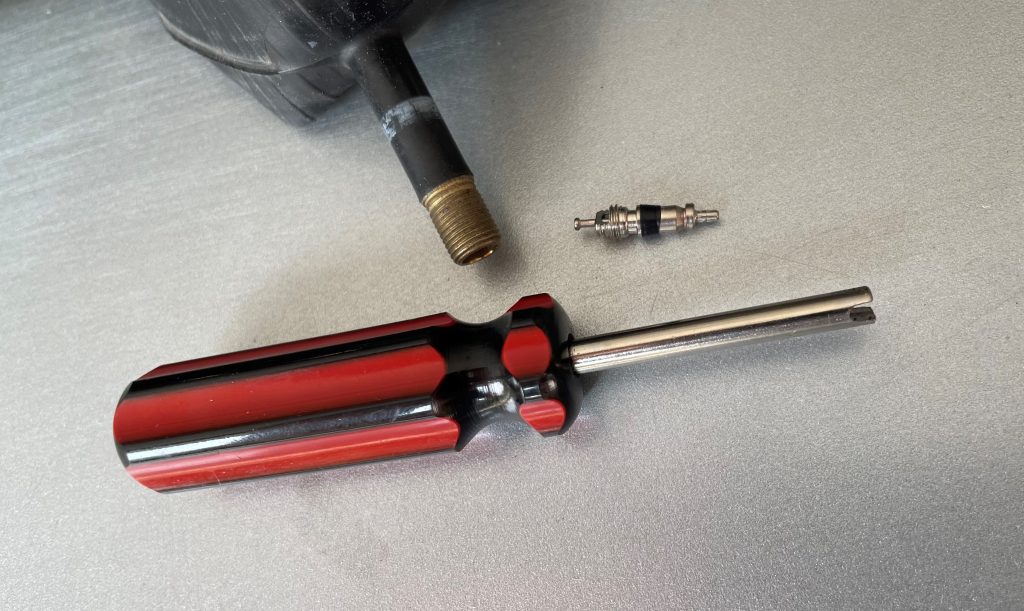
How a Schrader Valve Works
A Schrader valve is a poppet valve that’s actuated by a plunger on top of the valve body. When you insert your air hose fitting into the valve stem to inflate the tire, the fitting uses a tiny pin to press on that plunger to open the poppet valve. Assuming your compressed air source is greater than the pressure in the tire (typically north of 30+ PSI), the air pressure differential will force air from your air compressor tank, through the Schrader valve, and into the tire.
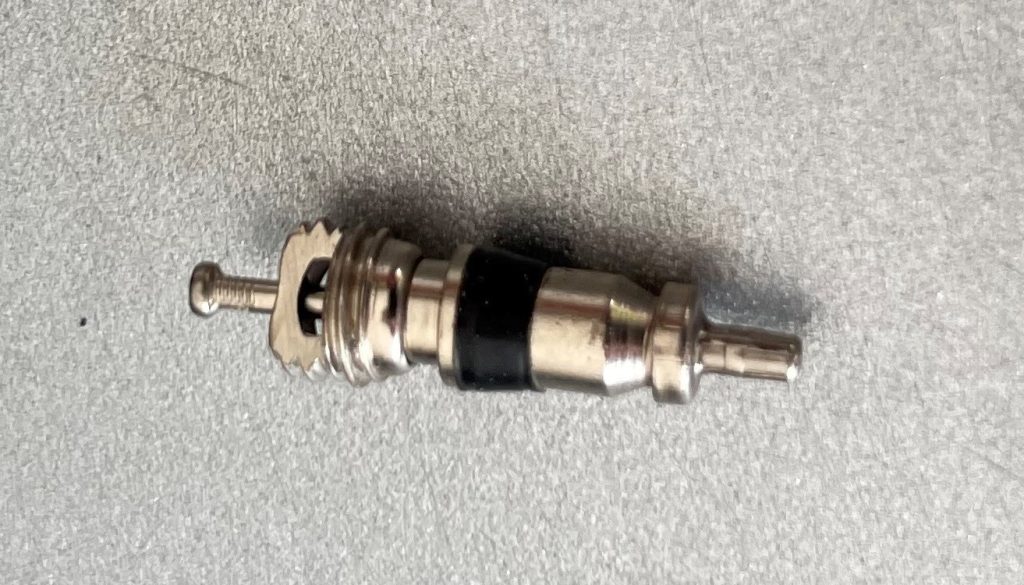
When you’re done, simply pull the air fitting off the Schrader valve. The plunger will snap the poppet valve back into its seat, sealing the air inside the tire. (That’s why you’ll hear a split second of air escape when you remove your tire inflator, as the valve springs back to its closed position.)
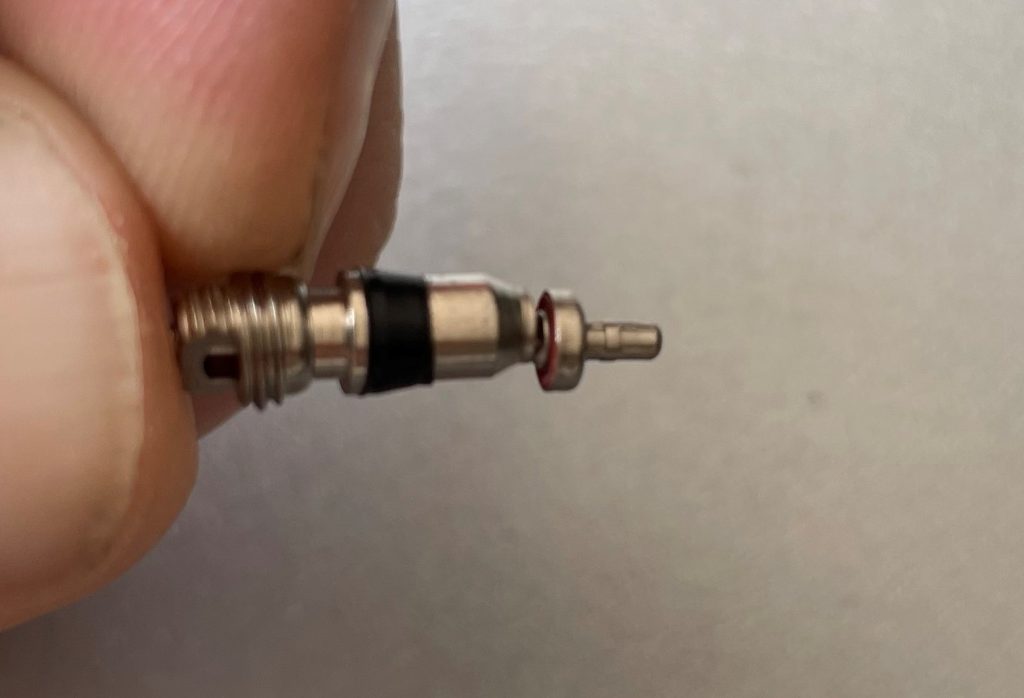
Conversely, if you want to deflate the tire or tube, just press on the plunger (with a specialized deflating tool) and air will escape out of the tire and into the atmosphere.
Super simple, super-er reliable.
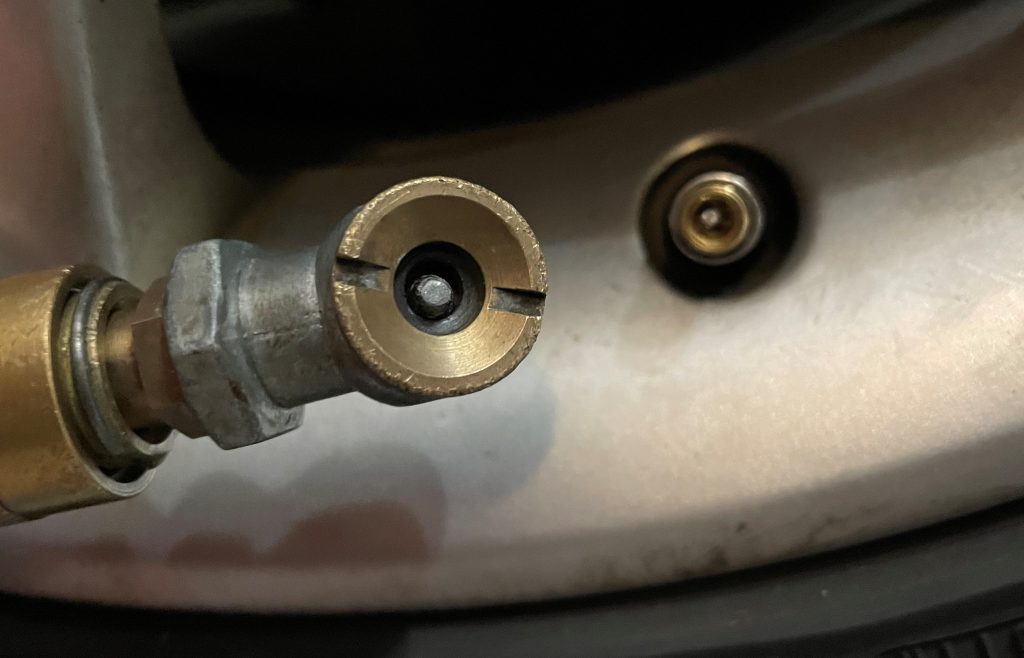
How to Remove & Install a Schrader Valve Core
If you know how to use a screwdriver, congratulations—you already posses the skills necessary to remove a Schrader valve core on a tire or inner tube.
Now, you just need a good tire valve core removal tool.
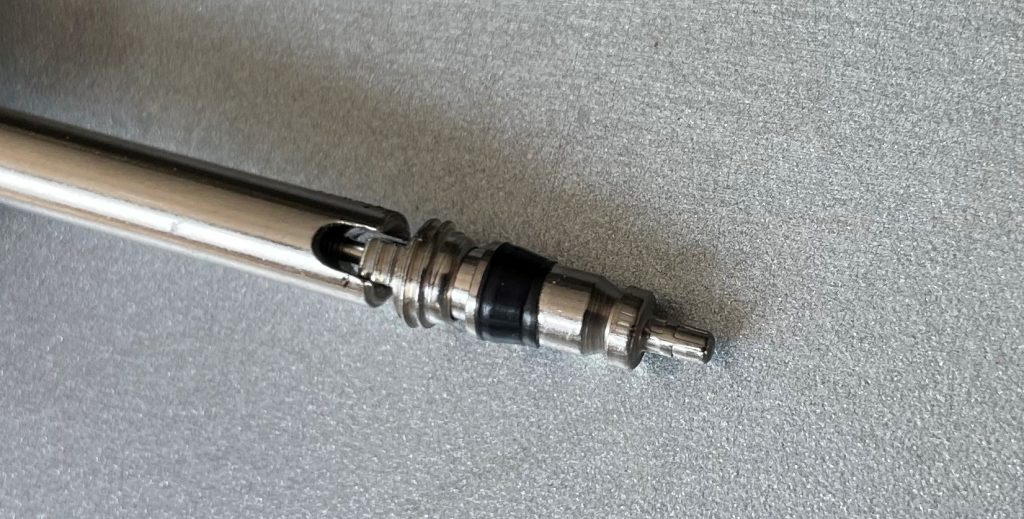
But first, if you plan to remove your tire’s valve core, jack your vehicle up on jack stands. This will keep weight off the wheel to prevent damage to your rim and tire when the tire/tube rapidly deflates.
Additionally, when you remove the valve core, there won’t be any air pressure left to keep the tire bead secure to the wheel, which means there’s a good chance the bead will need to be re-seated before inflating. Keeping weight off the tire may prevent that from happening (but not always).
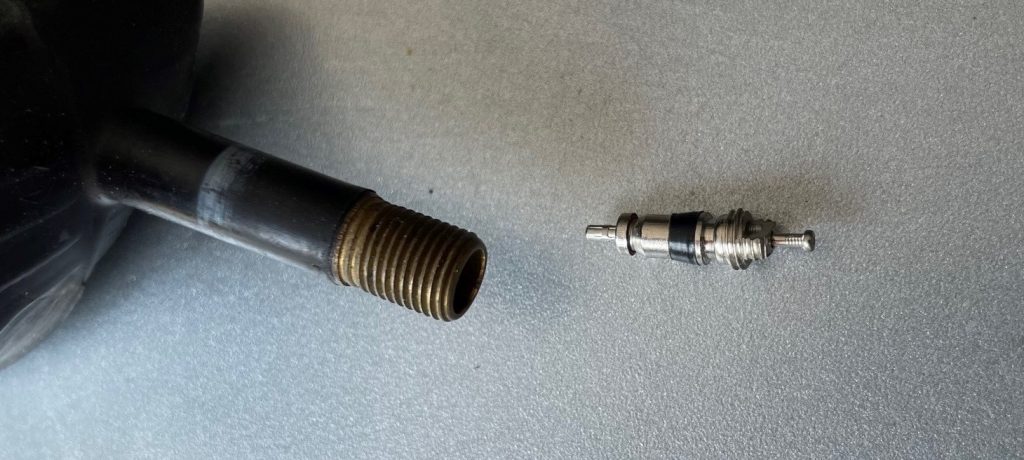
It’s also a really, really good idea to take as much air out of the tire as you can (using the method outlined above) before loosening the Schrader valve. If you don’t, air pressure might fire the Schrader valve out of the valve stem when it gets loose enough, and it’ll likely vanish into the dark corners of your shop.
With those precautions addressed, to remove a valve core from a tire, simply stick the tool into the valve stem and, with a little lefty-loosey action, the Schrader valve should come out without much fuss.
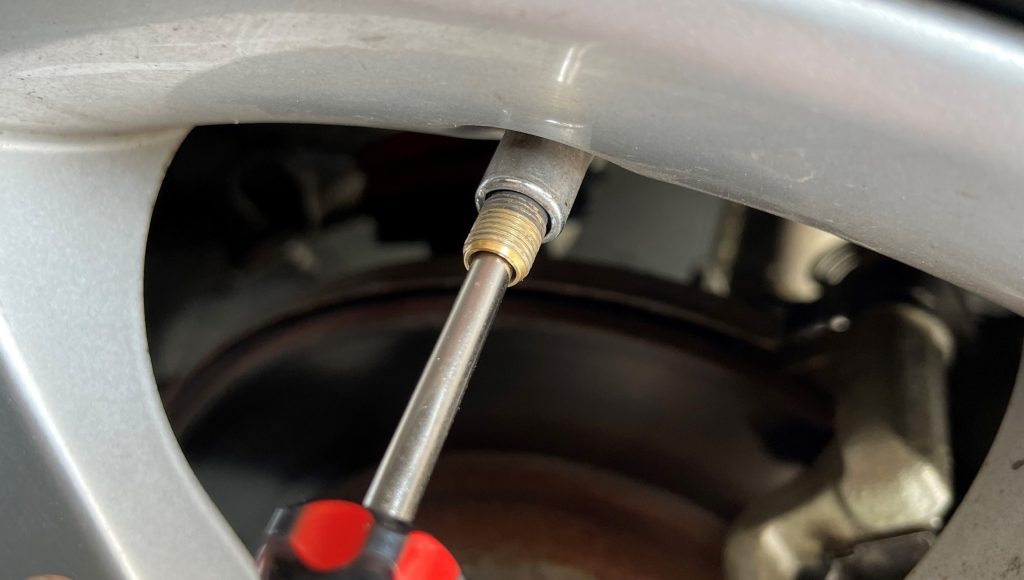
As you’d imagine, installing a valve core is the reverse process. A quality Shrader valve will screw right in. Once it’s snug, you’re ready to grab an air compressor and start inflating your tire or inner tube.
Depending on your application, removing a Schrader valve shouldn’t affect your stock Tire Pressure Monitoring System (TPMS) sensors if so-equipped—but check your vehicle’s owners manual first to make sure.
Why Remove A Schrader Valve Core? (& How to Tell if it’s Leaking)
That brings us to an important question, why would you want to remove your tire’s valve core in the first place?
While uncommon, a Schrader valve can leak. If you’ve got a slow leak in an otherwise unblemished tire, then remove the dust cap from your valve stem and spray some soapy water around the top of the Schrader valve. If it’s leaking, you’ll begin to notice bubbles forming in the soapy water.
Though that might indicate you need to replace your valve stems, it could just be a simple case of a loose Schrader valve. A quick righty-tighty twist of your valve core remover tool can snug it back into place.
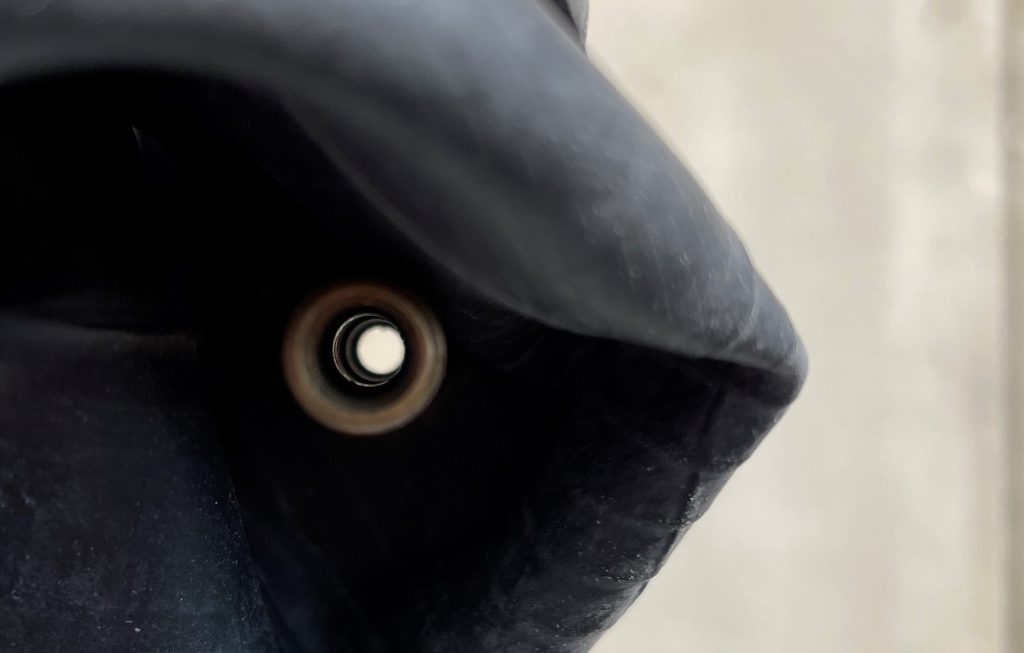
It’s also a handy trick for rapidly deflating a tire—but again, make sure to do it only when the vehicle is on jack stands to avoid damaging your rim or tire. (If you want to pull a tube out of a wheel first before removing the tire, start by removing the valve core.)
***
This article was originally part of our Tools Under 30 Dollars Gift Guide Series because a lot of gearheads don’t have a Schrader valve core removal tool. But good news! Despite how helpful they are, you’ll have no problem finding a tire Schrader valve core removal tool for under 30 bucks.

Comments